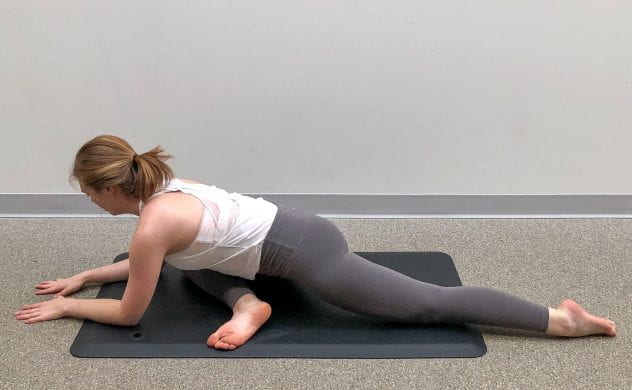Student Research | Happy Baby to Goddess: Creativity in Yoga Sequencing With Markov Chains
By Rachel Rosenberg, Class of 2019
This excerpt is taken from an MSiA student research blog posting. Each month, students in our program submit original extracurricular research as part of our blog competition. The winner(s) are published to the MSiA Student Research Blog, our program website, and receive a chance to attend an analytics conference of their choice. Visit our blog to see more.
Introduction
I started practicing yoga five years ago. I was tight from frequent running, living in Ohio and in need of a creative and active outlet. While I was initially drawn to the immediate endorphins from yoga, I stuck around for the variety of movement and continued challenge that it offered. I completed teacher training last summer before moving to Chicago, and I currently teach three classes per week around the city to people of all ages, places, and walks of life. Teaching is challenging in a completely new way; it forces me to think more about the big picture of the class, to create sequences that will make students feel both challenged and successful, and to foster a sense of curiosity and presence that some students may not get elsewhere.
One afternoon in my teacher training, the instructor told us that we would be leading our own practices for the first time. We would be responsible for sequencing an hour on our own, with the added caveat that we could use only beginners’ poses. We accepted this warmly, sequenced our classes, and practiced them in the hot loft studio we used. At the end, we were chastised for the better part of an hour for including poses that were too advanced, such as inversions, complex transitions, and complicated poses. This was not solely our practice anymore; we had to sequence for others, for whoever happened to join the class.
It was an important lesson: We would be responsible for others’ safety and enjoyment of the class. With this check, however, the instructor was careful to give us freedom: “Look at all of the different sequences you all made. If you are creative, it is possible to combine these beginner poses into a huge number of variations.” The challenge became crafting appropriate challenges for a variety of students, and reigning in our impulses to sneak in fancy or unfitting moves.

As teachers we become familiar with this constraint; it can be easy to get in a rut of repeatedly teaching the same poses or sequences. The style of vinyasa yoga is intentionally free-form, eschewing the rigidity of more traditional kinds of yoga. Yet there exist unwritten “rules” in most vinyasa classes: sun salutations must be used as a warm-up, Pigeon Pose signals the end of the “hard part” of class, and open-hip poses need to come after closed-hip poses. Though these rules generally serve some purpose (if only just to keep classes familiar from one studio to the next), I wanted to see if it could be possible to decrease the predictability of my classes and reinvigorate a sense of curiosity, challenge, and freshness, for my students and for myself. I also wanted to create a tool that could be useful to other teachers who may be facing similar challenges.
As an answer to these challenges of teaching, I created a Markov Chain model that “builds” a yoga class based on a few key attributes of successful multilevel classes. It feeds off of data from classes that I and others have written. It is intended to supplement a teacher’s own knowledge as he or she builds a class, serving as inspiration during times of writer’s block and challenging the teacher to think creatively. The data, model, and methodology used for this project will be discussed below.
It is important to note that there are many other challenges of teaching yoga that are not addressed here, including but not limited to first-time students, injured students, students with varying body types and learning styles, and varying student expectations. This method seeks to aid, not replace, the competent, responsive teacher.

